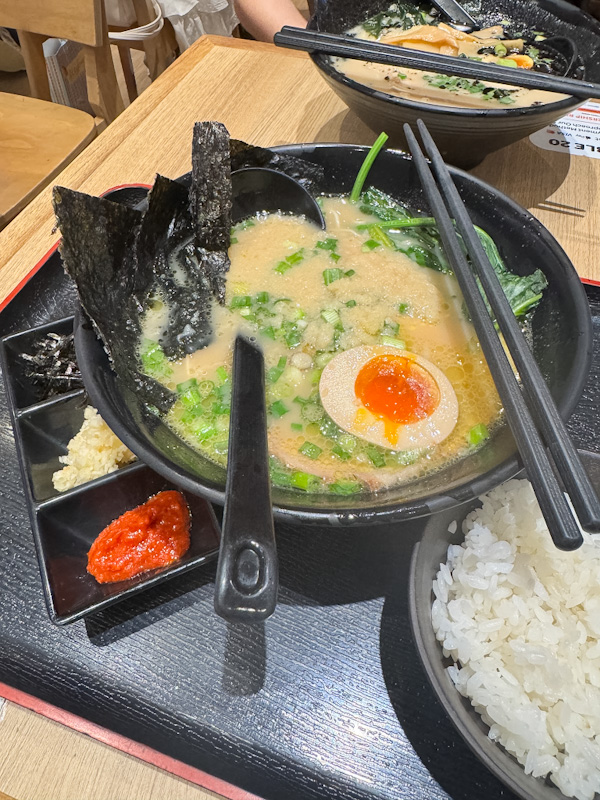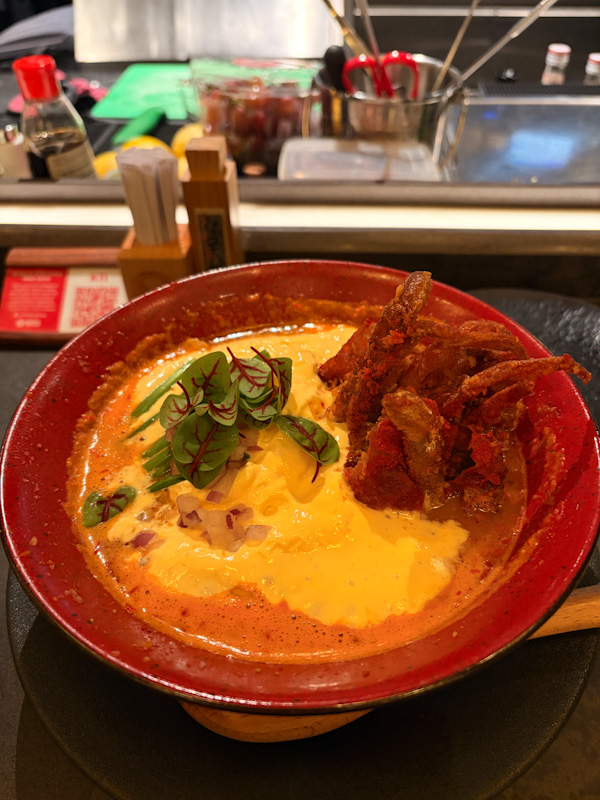WHAT WE ATE
- Shoyu Tonkotsu Ramen – 75/100, Tokyo
- Miso Ramen – 80/100, Tokyo


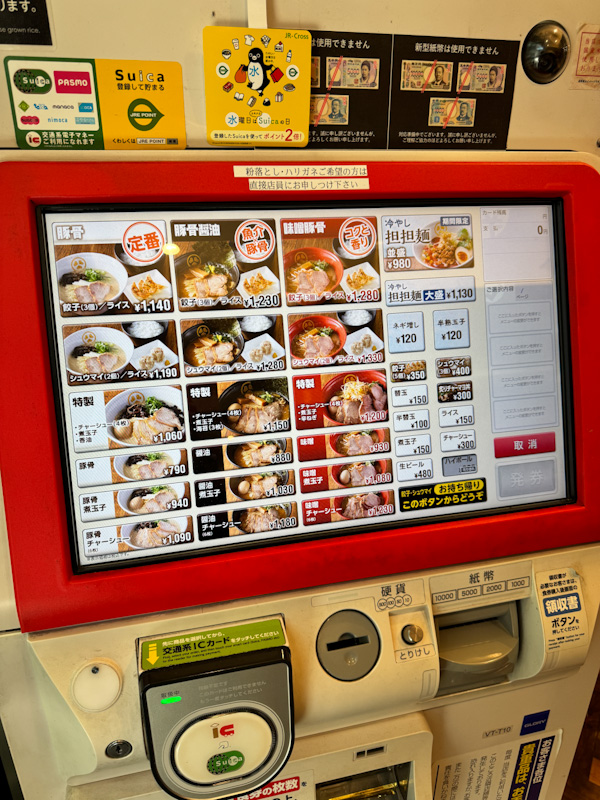
This ramen chain, a hip offspring of the renowned Ippudo family, takes the beloved tonkotsu ramen and gives it a fresh, contemporary makeover. While many ramen shops stick to the tried-and-true, Tokyo Tonkotsu Base isn’t afraid to color outside the lines. They’ve taken that luscious creamy tonkotsu broth and used it as a canvas for culinary creativity.
Fancy a miso-infused version that adds a nutty, fermented complexity? They’ve got you covered. Craving the umami punch of shoyu? There’s a bowl waiting for you. It’s an interesting playground where tonkotsu is the swing set, and various other familiar Japanese tastes are the slides and monkey bars.
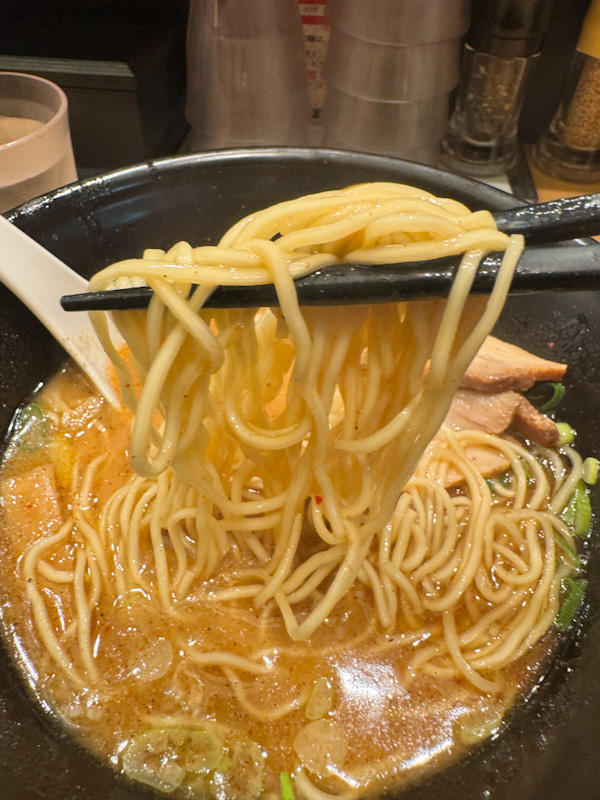

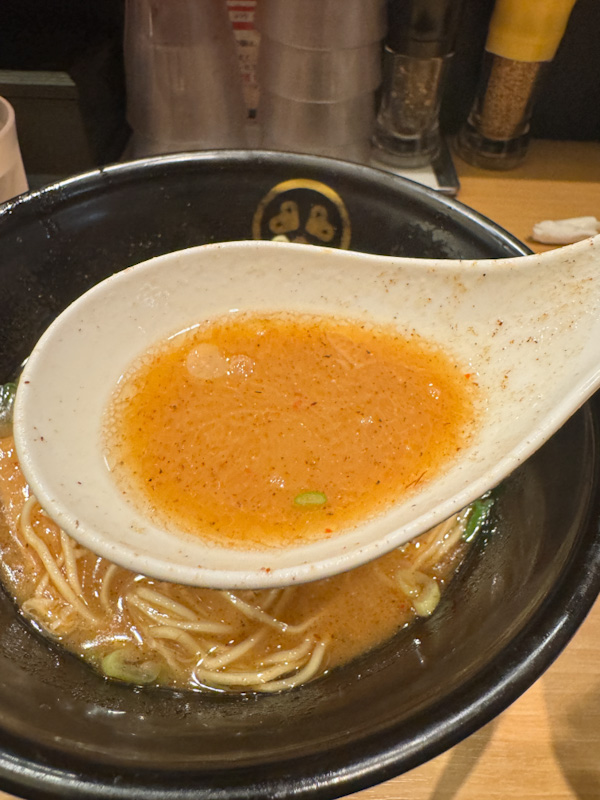
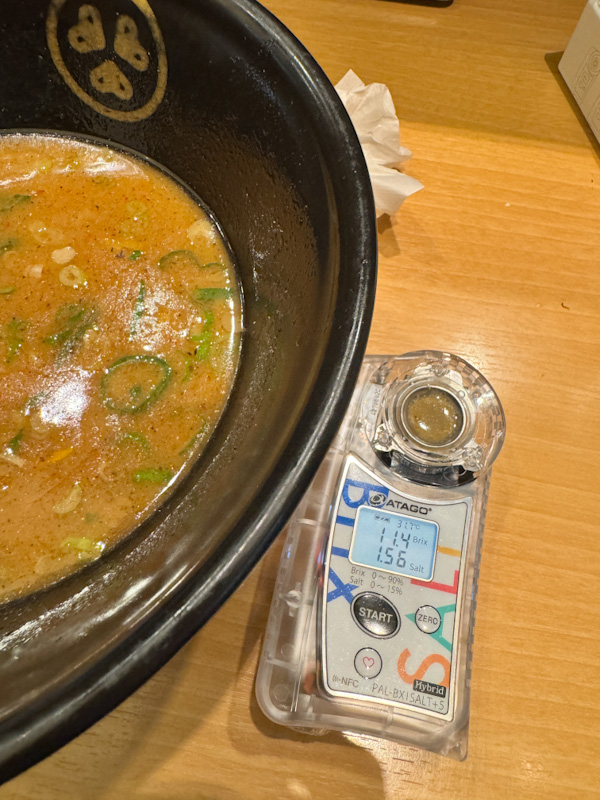

Shoyu Tonkotsu Ramen: 75/100
This ramen offers a unique twist on the classic Ippudo style, blending shoyu and tonkotsu with seafood elements. While it shows promise, there’s room for improvement in balancing flavors and textures.
Noodles: 30/35
Departing from Ippudo’s signature thin noodles, this dish features slightly thicker strands. Served al dente, they provide a satisfying firm bite and a subtle, earthy wheat flavor. The texture complements the robust soup well, offering a pleasant contrast to the broth’s intensity.
Broth: 25/35
The soup combines shoyu, tonkotsu, and seafood elements, resulting in a complex flavor profile. Initially, it presents a strong savory body with umami notes of bonito and a subtle lingering spiciness. However, the initial appeal is quickly overshadowed by excessive saltiness and greasiness, which flatten the palate. Refractometer readings between 1.6 and 1.7 confirm the high salt content. A reduction in salt and oil, coupled with a more pronounced bonito flavor, could significantly improve this broth.
Note: photo of refractometer shows 1.5 as the soup had lots of sediments that sank after awhile and this lowered the final reading.
Meat: 10/20
The rectangular slice of pork belly offers a firm texture without being tough. Its savory flavor develops as you chew, but it falls short of expectations in tenderness and juiciness. There’s potential for improvement in both texture and flavor to elevate this component of the dish.
Toppings: 10/10
Classic toppings of negi (green onions) and crunchy bamboo shoots provide familiar textures and flavors. The addition of spicy pickled mustard leaves and ginger as free table toppings for “Ajihen” (flavor variation) is a thoughtful touch, allowing diners to customize their ramen experience.

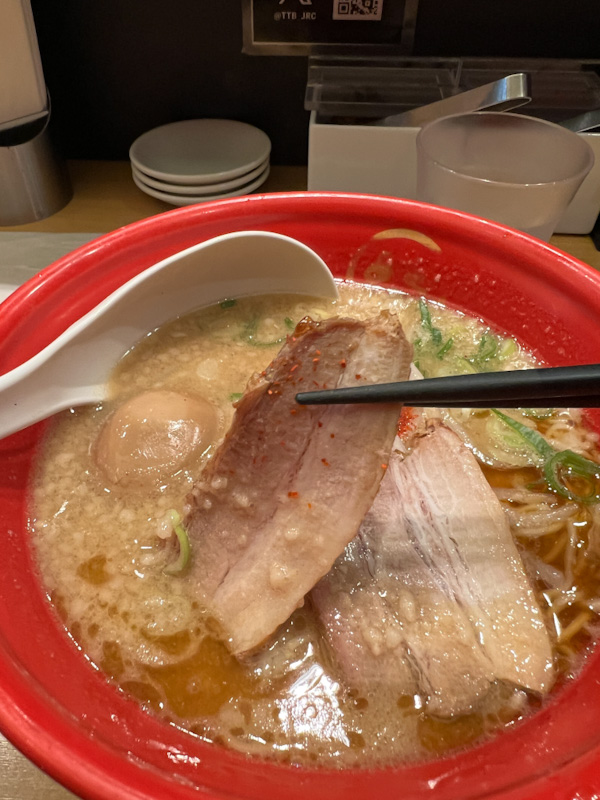

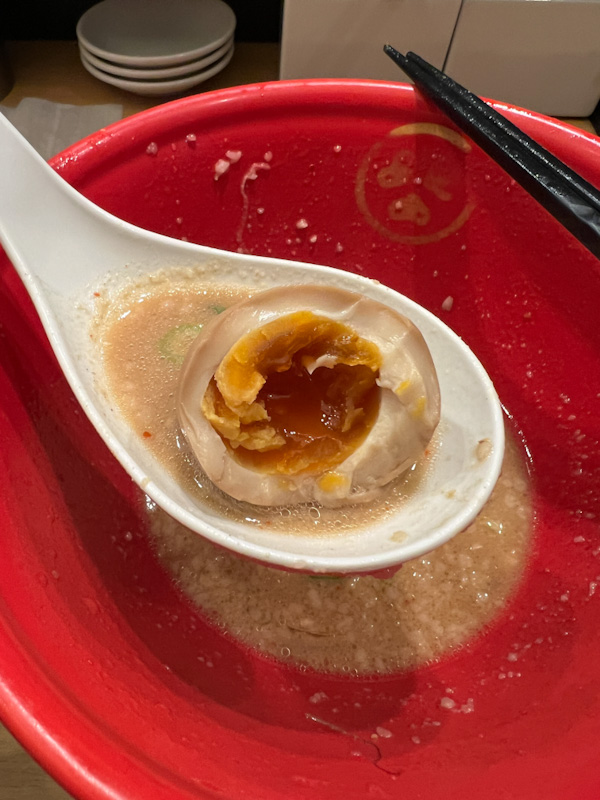


Miso Ramen: 80/100
This Miso Ramen offers a harmonious blend of flavors, showcasing a well-balanced broth that complements its carefully selected ingredients. While there’s room for improvement in some areas, it definitely the better option between the two we’ve tried.
Noodles: 30/35
Consistent with their other offerings, this dish features slightly thicker noodles served al dente. They provide a satisfying firm bite and a subtle, earthy wheat flavor that pairs excellently with the robust soup. The texture offers a pleasant contrast to the broth’s intensity, enhancing the overall mouthfeel of the dish.
Broth: 30/35
The soup ingeniously combines miso with a tonkotsu base, resulting in a complex and well-balanced flavor profile. The savory and umami notes of the miso elevate the overall taste, adding depth and complexity. The broth is rich, savory, and slightly sweet, with a creamy texture, deep umami flavor, and a lingering spiciness. Hints of garlic aroma further enhance the sensory experience. Notably, the saltiness is well-managed, addressing a common pitfall in miso-based broths.
Meat: 10/20
The meat component, while consistent with their other offerings, leaves room for improvement. The rectangular slice of pork belly has a firm texture that isn’t tough, and its savory flavor develops pleasantly as you chew. However, it falls short in tenderness and juiciness, key attributes for exceptional chashu. Enhancing these aspects could significantly elevate the overall dish.
Toppings: 10/10
The ramen features classic toppings – bean sprouts, negi (green onions), and tamago (egg) – which provide familiar textures and flavors that complement the broth well. The addition of spicy pickled mustard leaves and ginger as free table toppings for “Ajihen” (flavor variation) is a thoughtful touch, allowing diners to customize their ramen experience to their liking.
DISCLAIMER
One man’s meat is another man’s poison.
Find out more about our palettes and how we evaluate our ramen here. 😉

